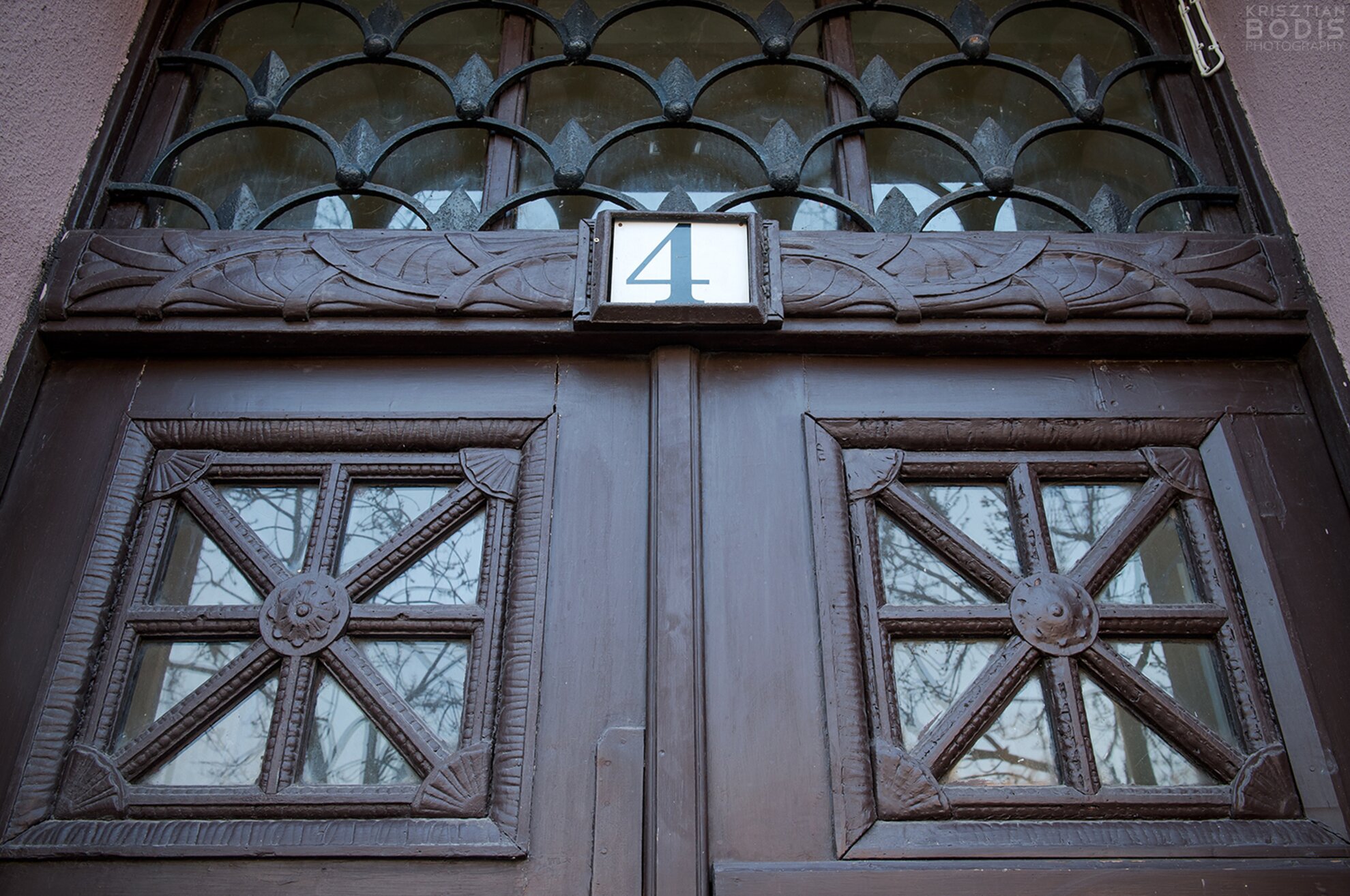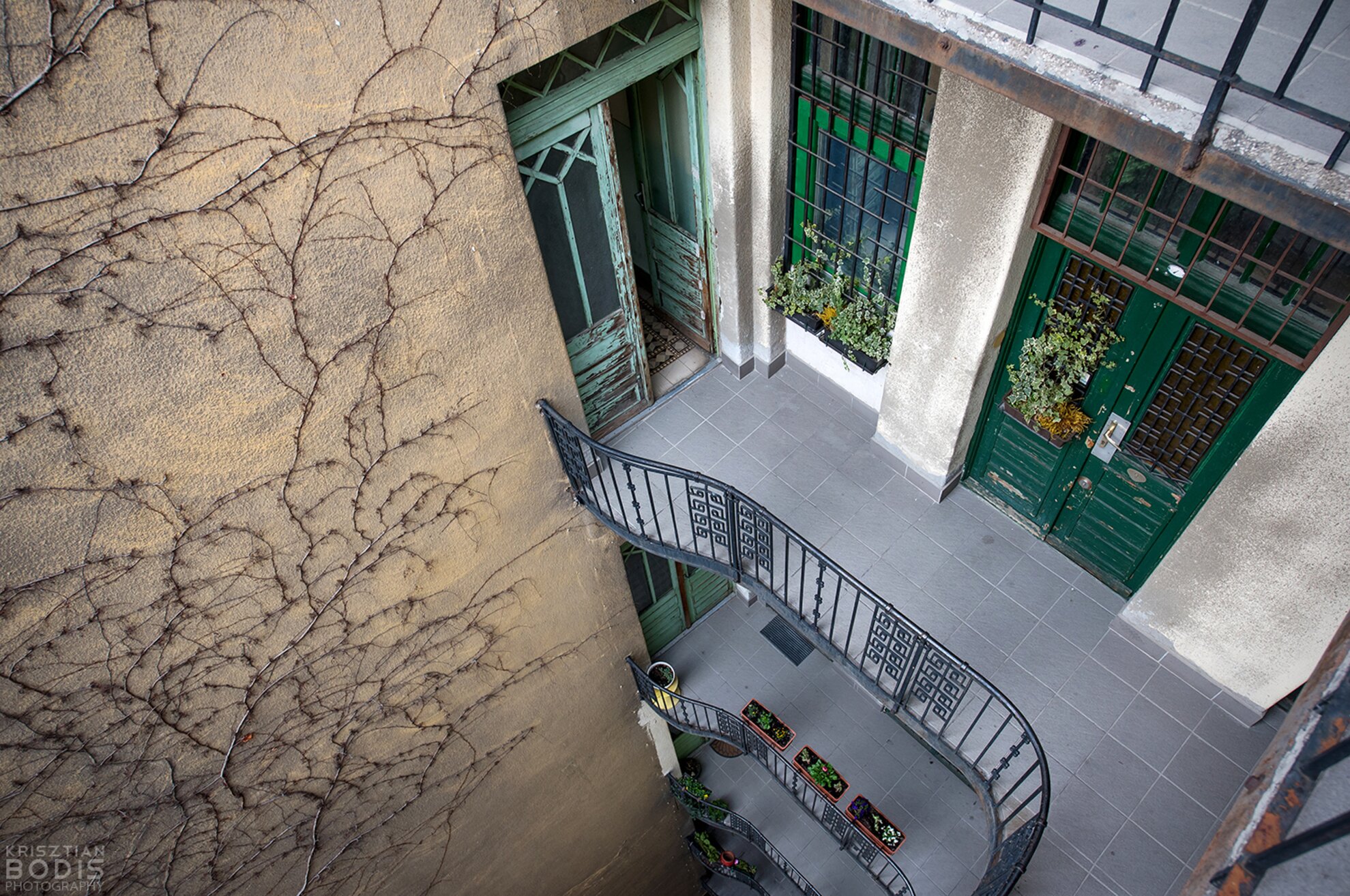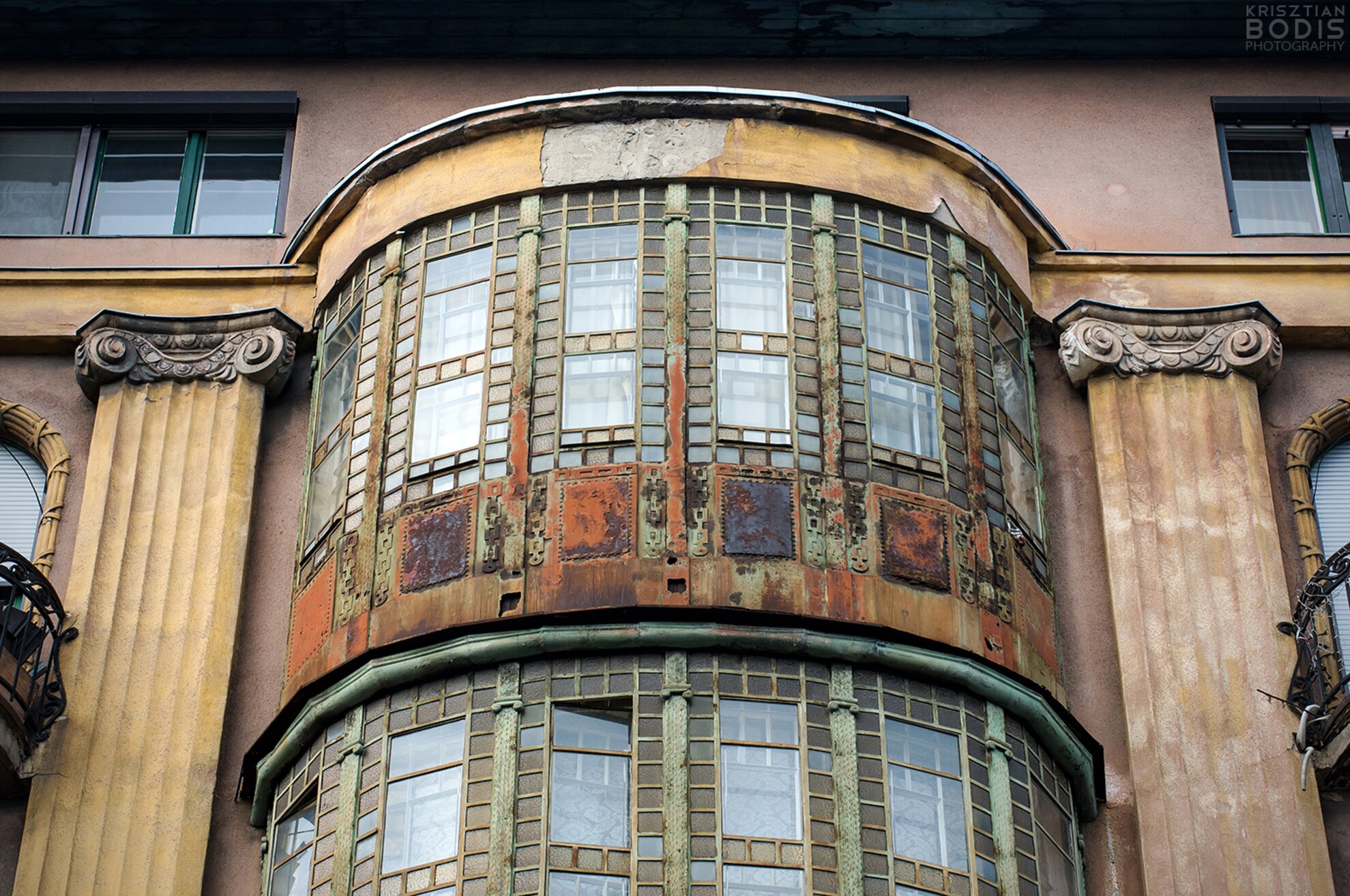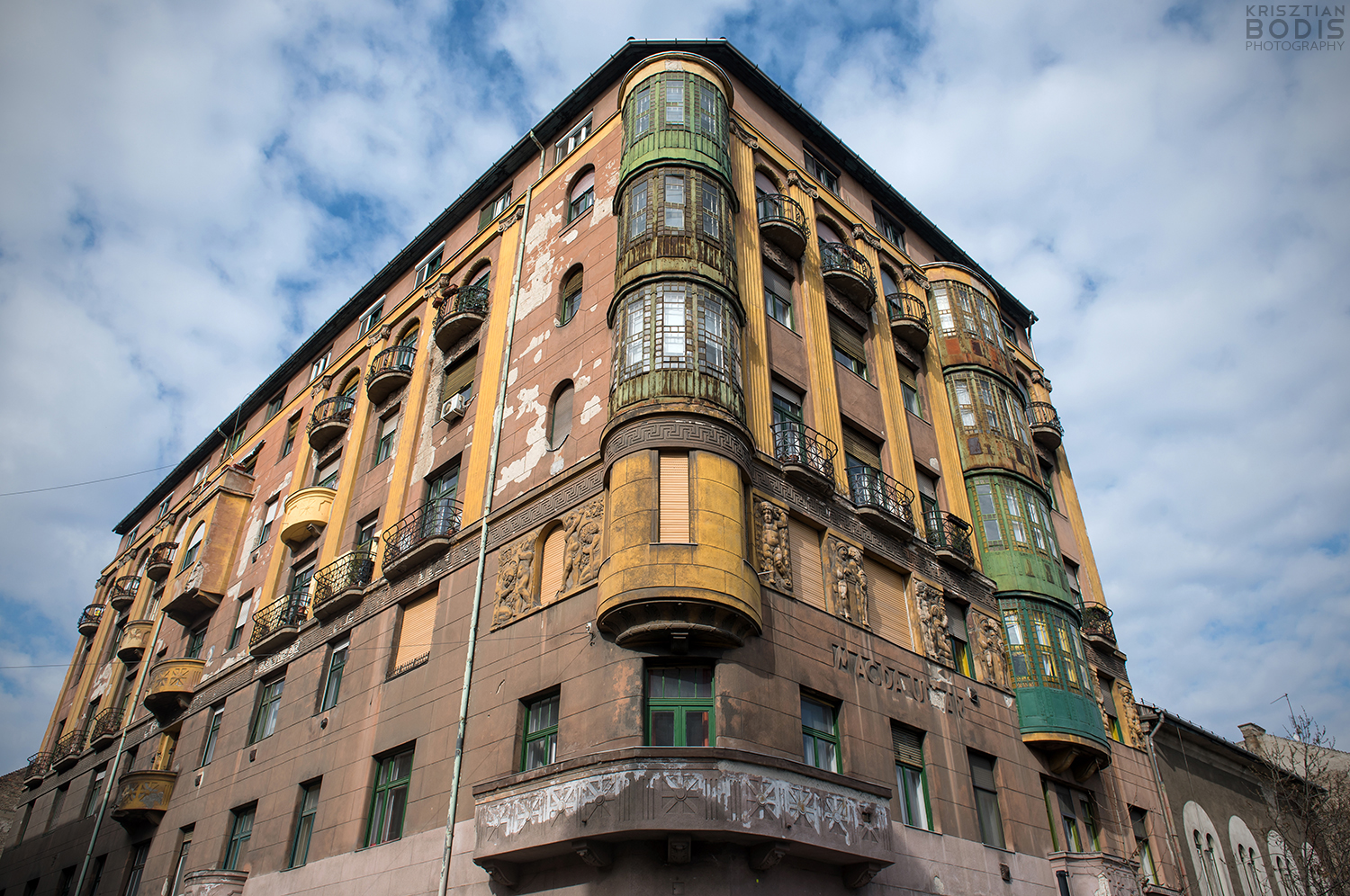The 6 storey building, designed by the Löffler brothers, stands at a corner of Mátyás Square like a house from an alternate reality. Both its special architecture and the urban legends surrounding it means the apartment building is the perfect choice as the location of the new Hungarian movie Liza, the Fox-Fairy. We took a look at the house as part of Budapest100 and were astonished by its beautiful architectural features and the unbelievable stories we heard from residents.
The area around Mátyás Square has always been inhabited by a mixed crowd, from lawyers, doctors and teachers to craftsmen and tradespeople.

This part of Józsefváros has never been among the most frequented parts of town. In the past, the local "bad boys" used to keep a kind of order here, and they often make an appearance in the anecdotes of the residents of the area. The locals also told us stories, which give the sense that there was a strong sense of community among those that lived in the area - everyone knew everyone else. The square was - and is - home to a café.

The square has been through much, and recent years have shown signs of a slow evolution. There aren't any dubious people loitering during the day, plus the café we mentioned has been reborn. Another spot, Gallery8, has interesting and unique exhibitions. We arrive from the direction of Bauer Sándor Street, pass in front of the Kesztyűgyár Community Centre and see Mátyás Square unfold in front of us as we approach. We can see a playground and a few benches, but the view is dominated by a tall building of 6 storeys. Its top floor added in the 1960s is not nearly as grand as the original building.

The Budapest100 volunteers, who did the lion's share of research, uncovered that those who constructed the building were lawyer Dr Lajos Vágó and 'droguista' Zsigmond Balassa. The architects, the Löffler brothers, co-designed numerous other pre-Modern buildings in Budapest as well.

The best known work by Béla and Sándor Löffler is - as we've already written - the monumentally simple Kazinczy Street synagogue, which carries elements of Lechner's Art Nouveau as well as elements of the late Art Nouveau of Vienna. At a young age, Béla Löffler worked for Béla Lajta, hence the similar features between their buildings.

We know for certain that the house built between 1911 and 1912 was home to the Mátyás Cinema (mentioned in official papers as János Griffatong's moving picture room) at least until the end of the 1920s.

The huge storage space in the basement, created for the shops on the ground floor, indicate that the local traders were very active.

The ornamentation of the façade is geometrical, while its most visually unique element is the glass enclosed balconies of the larger flats. These on the corners, and the iron structures appearing on the Mátyás Square side unite the floors horizontally while the huge Ionic pilasters give the building its vertical accent.

We step into the gateway from the square, but not before admiring the reliefs and the "ANNO 1912" sign referencing the year the building was finished.

In the stairwell, the 3D floor pattern, the blue tiles of the first step, the geometrical ornamentation of the iron grating and the characteristic "operating room green" paint of Pest's buildings catch our eyes. Then we take the pleasant wood panelled elevator to the 3rd floor, where a resident allows us a glimpse of their flat. This is one of the grand flats with the aforementioned glass enclosed balcony.

The house had numerous notable residents. Ferenc Zámor and his family was among its first inhabitants, having moved into flat 1 on the 2nd floor in 1912. The three room flat was their first home with electric lighting, but the head of the family didn't have long to enjoy it, since he was taken prisoner of war by the Russians in 1915 and he only managed to escape in 1921. Once home, he became head engineer of the Ganz railcar factory, and played an important role in the design and export of the Árpád rail-bus and several other successful products, which even made it to Egypt and Argentina.

Marilyn Borovi - now living in the US - also used to be one of the residents; Budapest100 found her (and the Zámors) thanks to committed research by the volunteers. The family lived in the building from 1934; the father had a spice shop in József Street. Although Ms Borovi left for Austria in 1955 and went on to America in 1956 with her brother, a letter by her shows she remembers numerous little details.

Marilyn's Hungarian first name was Magda – this used to be an inexplicably frequent first name in the house. The coincidence is eerie, since the building is called Magda udvar ("Magda Court" in English).

Another former resident for whom the Hungarian revolution of 1956 was a determining event is Cecília Takács. She remembers a boy, who wasn't even 18-years-old, carried a gun and sometimes brought food for the residents hiding in the basement during the November 1956. When the revolution was repressed, someone reported him and he was jailed. When he turned 18 he was hanged. "His name was Pál Somlai, he was a beautiful blonde boy, a boxer. His was family from Transylvania, he had poor aunts who had no money for a lawyer."

WWII and the resulting distress brought about a grotesque situation. A janitor who was a fan of horse racing housed a jockey in her ground floor flat (basically a kitchen and a room). The man didn't want to leave his favourite race horse alone during the bombings. He asked for a permission to keep the horse in the building, so, unbelievable as it may sound, a horse was also a resident of one of the ground floor flats for a short while. The following owner of the flat found two bridles there - hilarity ensured when the residents let them in on the secret.

The janitor and the jockey were also involved in another incredible incident; they put the whole house's maintenance money on a horse at the racing grounds - and lost it! There was nothing to do but to confess their failed gamble to the residents, who had to make the payments again.

There is another story from 1956. Residents were waiting for the bombing to be over in the basement, and noticed something really surprising once they returned to the upper floors of the building. The soldiers of the Red Army had broken into a bicycle storage in the square, but since they were from a place without bicycles, they were trying to learn to ride and kept falling. The residents laughed and the soldiers shot the place to pieces in anger.


Heading to the upper storeys, we can see that the view is still amazing.
From the roof, one can see into the Józsefváros buildings with hanging corridors, and you can catch a glimpse of the Buda Hills and the Gödöllő Hills on the horizon. The top floor also used to house the laundry area.All in all, it was no accident that the building caught the attention of the directors of Liza, the Fox-Fairy, one of the most original Hungarian movies of recent years. The video below reveals behind the scenes shots (in Hungarian).
The building was left out of the Magdolna Program, which aimed to rehabilitate the area - perhaps on account of its architectural value and the cost of restoring its features. We hope that that the building will soon get the attention it deserves.




